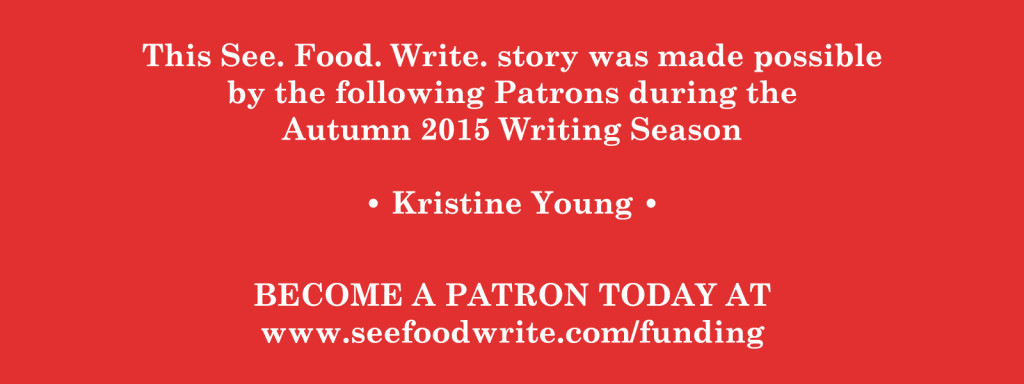Under the yellow pallor of a smoke-filled sky, I walked along the edge of an underworld of sunflowers.
I was visiting a sunflower farm in Woodland, California, but a major wildfire was ablaze many miles to the east, casting a ghastly gloom over counties upon counties across the the state’s Central Valley. Some people mistook the gray skies for an overcast day, but the reality was far more grim. In total, the Butte Fire of September 2015 burned more than 70,000 acres (280 square kilometers) — more than twice the area of Paris, France — and destroyed at least 475 residences and claiming two human lives.
Filtered through this airborne layer of ash and soot, sunlight takes on an otherworldly, yellowish-orange tint — making this sweeping vista of dying sunflowers appear all the more apocalyptic. Mention sunflowers, and our immediate mental image is one of golden-faced blossoms perched upon proud, green stems. But this field of desiccated stalks looked more like an enormous zombie army, marching in unison with some unholy purpose, heads drooped, a husk of their former, vibrant selves.
This is what harvest time looks like for sunflower seeds.
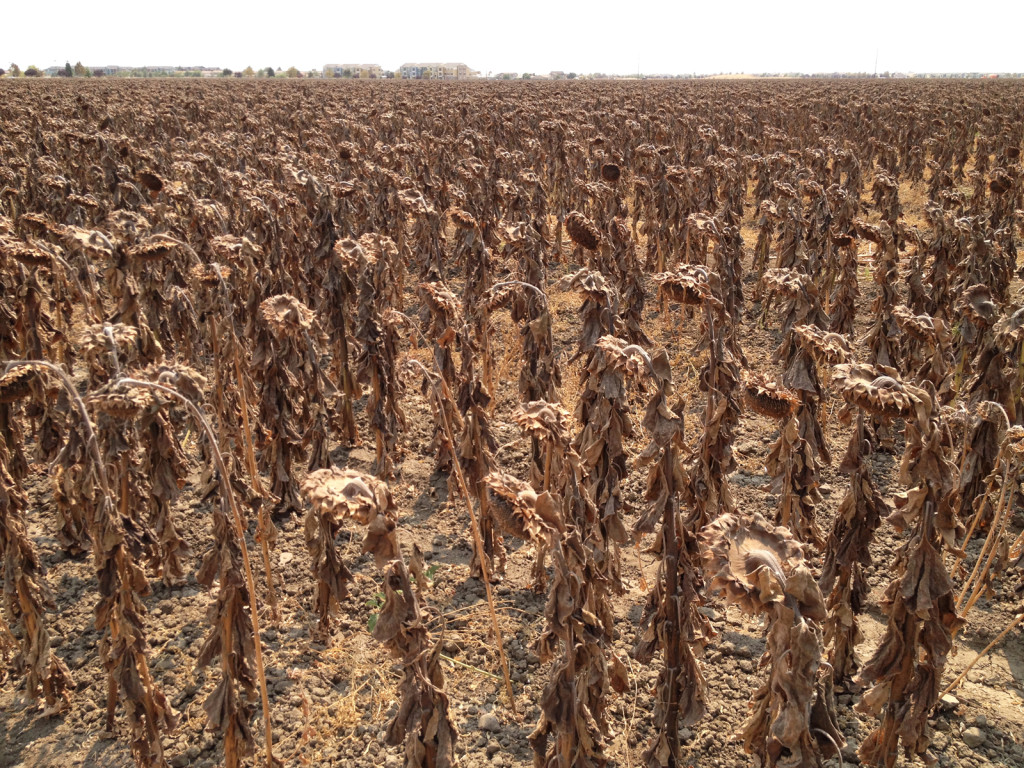
“It’s beautiful when it’s blooming,” said my friend Dr. Sara Kross. “And it’s kinda creepy when it’s crunchy like this.”
Sara is an ecologist. We first met several years ago, connecting over our mutual interest in teaching scientists how to speak with the public. Since then, she’s invited me to help with communication trainings for graduate students at the University of California, Davis, and I’ve brought her to local bars to lecture about her research to non-scientists.
Believe it or not, Sara’s expertise is entirely fitting for a boozy setting. A native of New York state, Sara conducted her doctoral research in New Zealand. There, she looked at whether a local falcon species could help decrease damage to wine grapes, which were being eaten by songbirds like the European starling — a species that, over the course of history, has been introduced to many parts of the world by English colonists, often becoming agricultural pests.
So with talk titles like “Winemakers’ Wingmen: Bird Conservation to Benefit Farming”, Sara was an easy card to promote to a pub crowd.
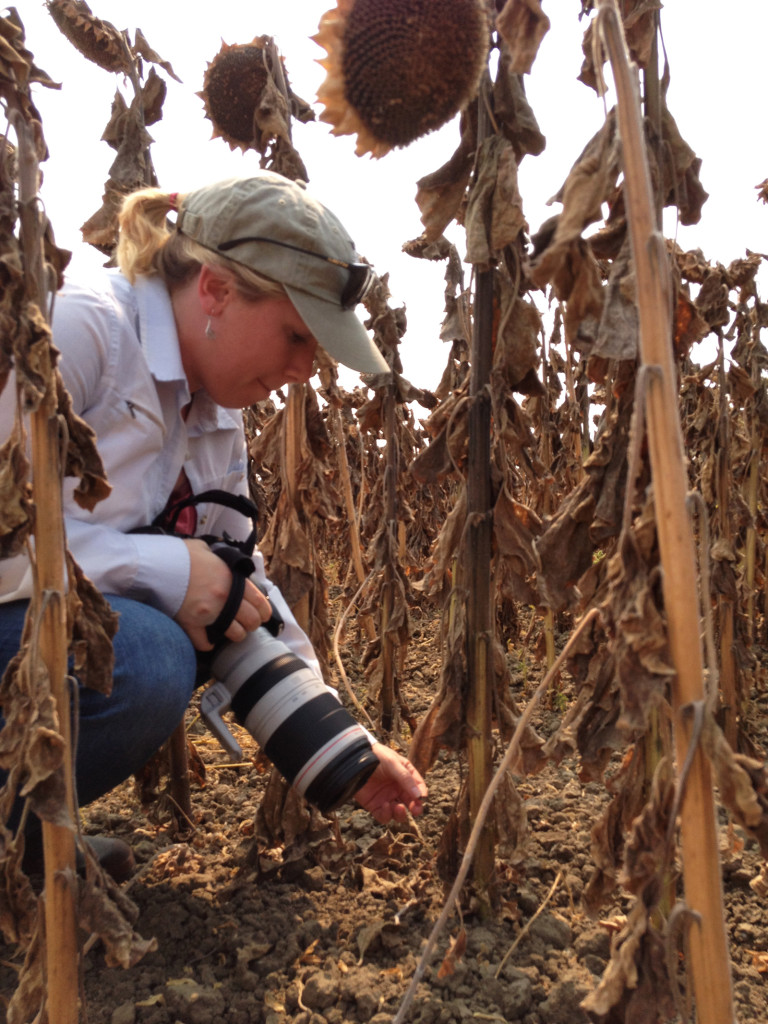
Sara and I hadn’t met up in a few months, and I wanted to catch up and hear how she’s been applying her research to California settings. I knew she had moved on from falcons, and was looking at how well songbirds themselves act as natural control over insect pests in different crops.
Let’s do sunflowers, she wrote back. My instructions were to meet her in a supermarket parking lot in Woodland, a farm town of about 56,000 people. Its core is made up of historic storefronts lined up along neat grids, anchored by a “Main Street” and an old county courthouse. Our meeting spot, however, was a freshly stuccoed shopping center, not far from a similarly tidy residential subdivision.
“We’re literally just driving across the street. We probably could’ve walked there,” she laughed when I arrived, and got into her car.
One U-turn later, we parked and stepped onto a hot, dry, dusty field.
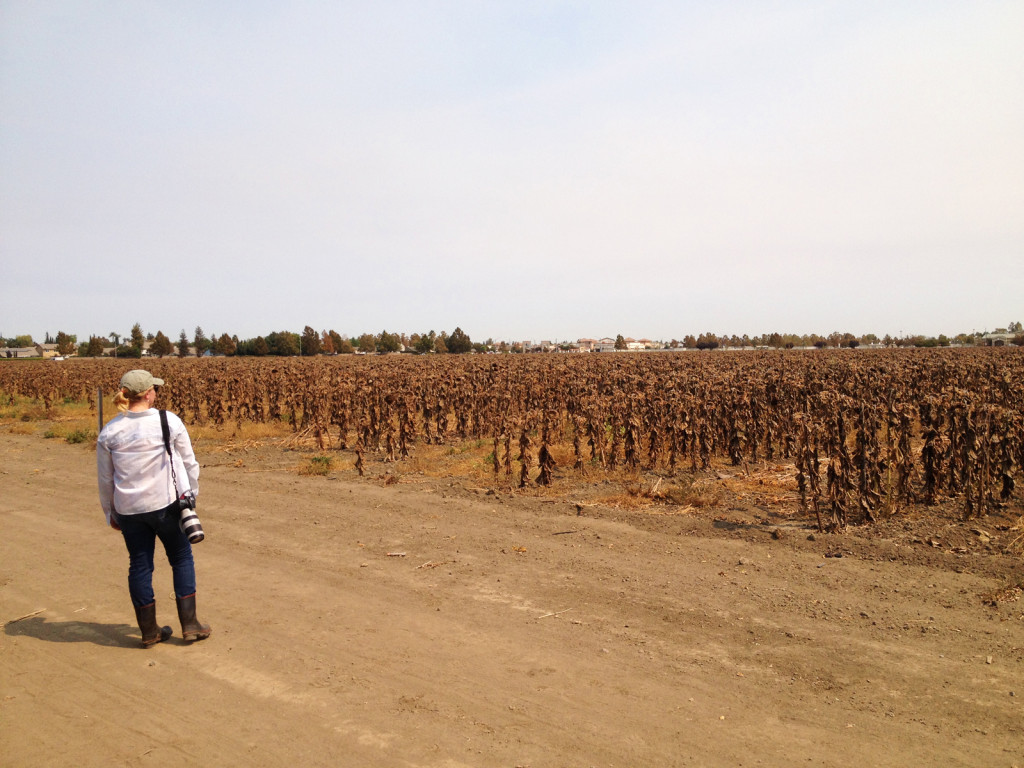
One of Sara’s many projects is looking at the sunflower head moth, Homoeosoma electellum, an insect that migrates south-to-north across North America. Female moths lay their eggs on wild and cultivated sunflowers. The resulting caterpillars grow up to about three-quarters of an inch long (2 centimeters), first feeding on pollen, but then eventually gnawing into seeds and eating the nutritious kernels within. A sunflower moth caterpillar can eat up to nine seeds as it grows.
“And so you can have nine or ten larvae in here,” Sara said, “And you’re losing a hundred seeds per sunflower.”
You’ve probably eaten more sunflower seeds in one sitting watching a ball game. But the sunflowers in these fields around town were being grown for seed — that is, seed sold to other farms to be grown as sunflowers. These fields were seed factories.
“So every seed counts, in this case?” I asked.
“Right, every seed is sold to be one sunflower.”
Sara plucked a sunflower head from along the field’s edge to look for caterpillar damage. The crunch of the stem was audible, as was every step we took on the field — which was littered with the already-mowed remains of male sunflowers, who served their pollinating purpose early in the summer, and thus were first to be razed.
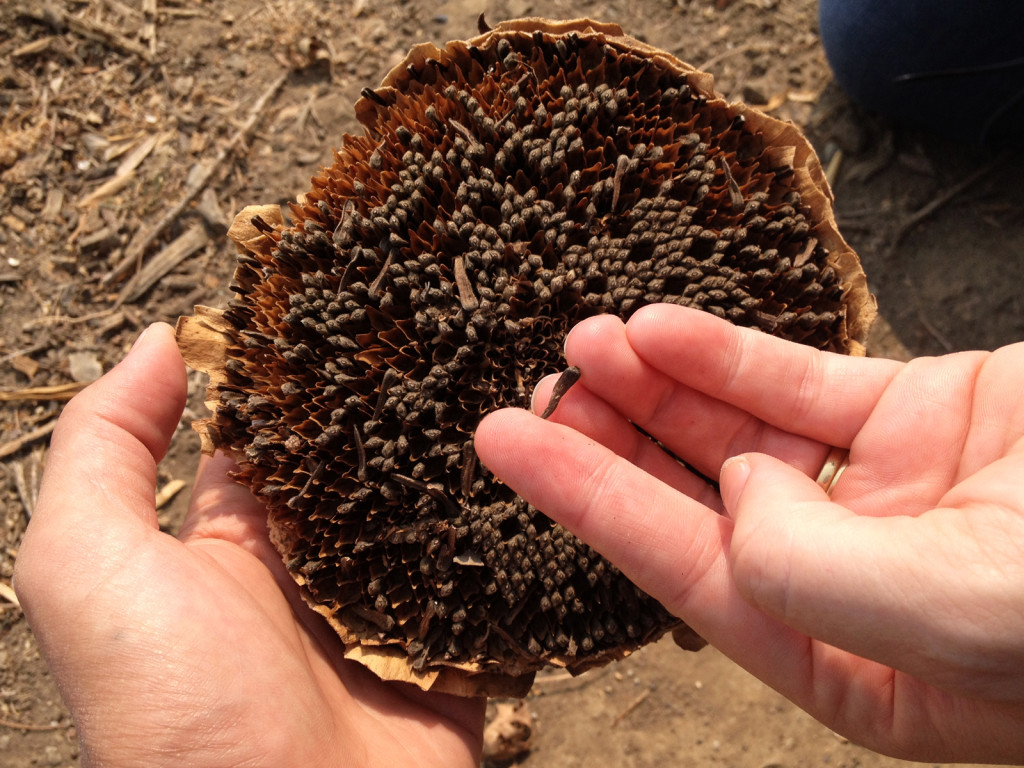
“I don’t think we’d find any in these,” said Sara. “Actually, we might not want to look at that one because it doesn’t look like it has any frass in it.”
“Oh yes, frass,” I exclaimed excitedly.
Frass is the fancy technical name for insect poop.
“So yes, that’s what we use,” Sara laughed. “When we did these damage assessments, we were looking at frass on the flowers as evidence of there having been insect damage to them. We quantify what portion of each flower have had insect frass on it.”
This is where the research question gets more complex. The presence of frass is fairly good measure for caterpillar damage — what goes in, must come out. But the absence of seeds does not necessarily equate with caterpillar damage. In fact, sunflower heads with patches of cleanly plucked seed pits might be showing evidence of bird damage.
I felt my brain tie into a knot for a brief moment. Sara is trying to measure how much songbirds might be suppressing seed damage by caterpillars, but she also needed to account for the fact that many songbird species also eat sunflower seeds.
“It’s very complicated,” Sara admitted. It seems that songbirds can play the hero or the villain, depending on the species and the season. Earlier in summer, when sunflowers are in their glorious bloom and haven’t produced seeds yet, all songbirds can do is to fly in and pick off the insects living on the flowers.
“And then in this time of year, they start flocking and they become more omnivorous,” said Sara, referring to autumn’s approach. “In the summer, most birds — not all — forage more on insects than they do at other times of the year, because their chicks need high protein to grow, and there’s more insects around. So it’s a good food source for them.”
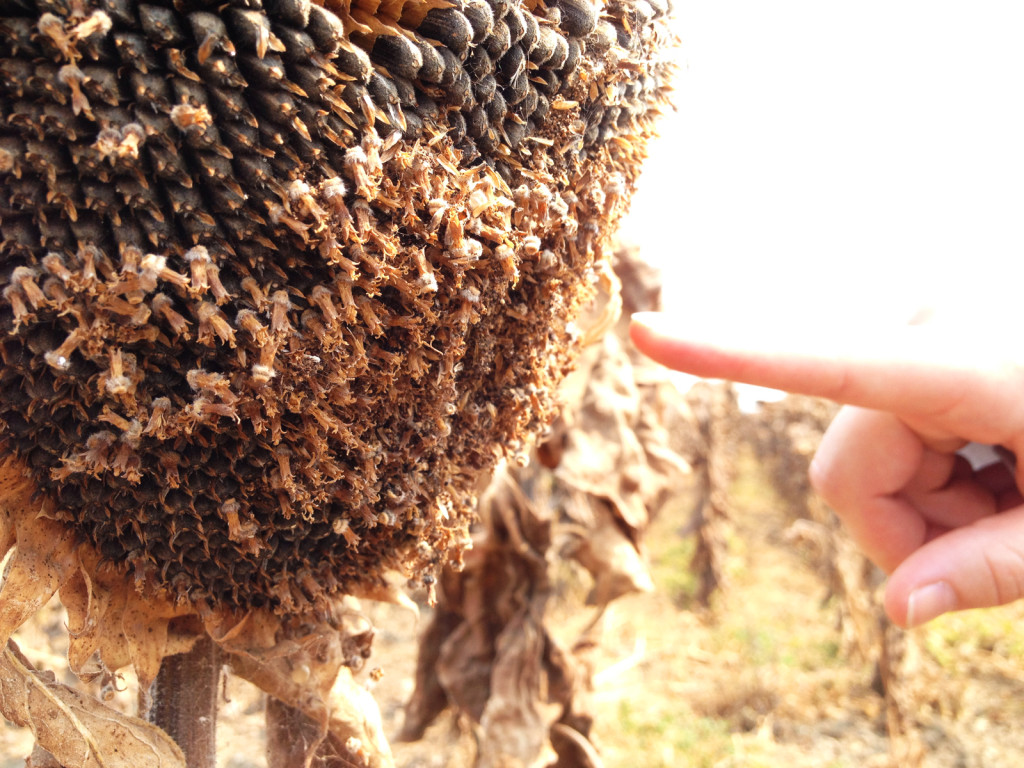
Calculating the pest control benefits of songbirds, then, is a bit tough to figure out. To sort out the question, Sara and her team of student assistants conducted surveys and experiments at scores of sunflower fields around Woodland — including the one we were standing in — to assess caterpillar damage and bird damage.
They measured the seed loss and frass observed in sunflower heads, but also recorded notes about the physical surroundings of each field — including the presence of other vegetation, such as trees and shrubs that farmers sometimes plant to create wind breaks in between fields. From all this information, Sara hoped to find some patterns that teased out the benefit of birds for caterpillar control.
Much of the data still has to be analyzed, but two puzzling trends have stood out so far.
It seems that sunflower fields with more habitat along their edges suffered less caterpillar damage, versus fields with just bare dirt or a weedy edge. But more strangely, the two types of fields showed little difference in bird damage.
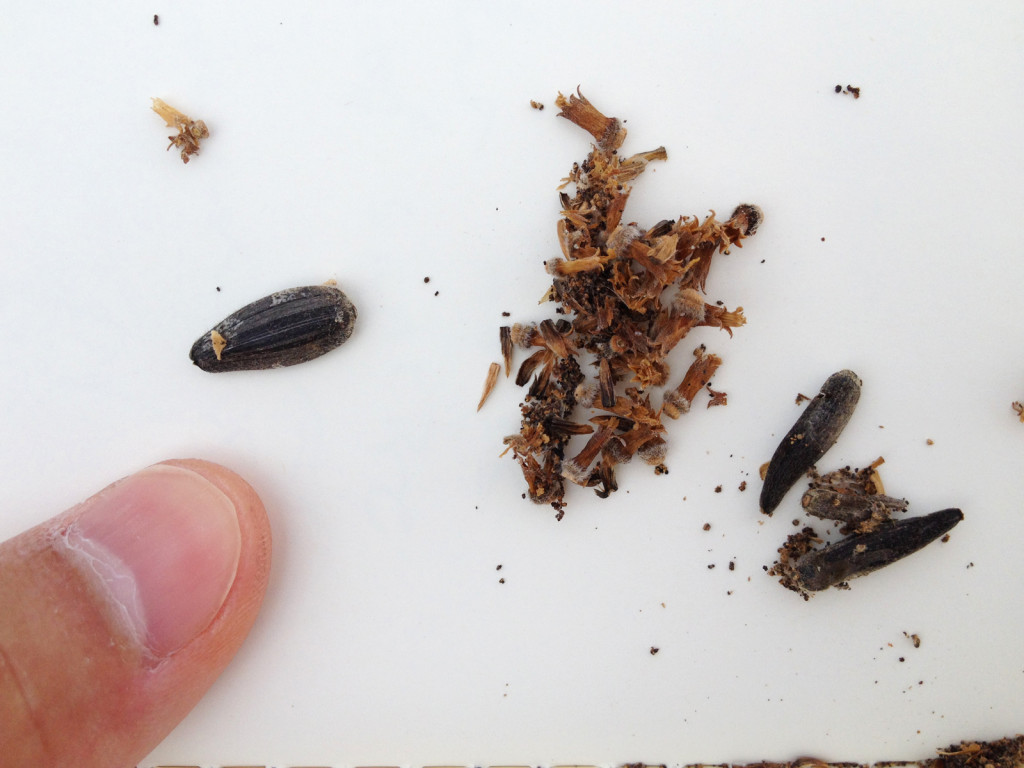
Sara thinks several different factors might be at work. One assumption is that birds are eating their share of caterpillars and seeds in both types of fields. But then in tree-lined fields, something else is also eating the caterpillars, but not eating the seeds.
Trees form complex habitat, with lots of nooks and crannies that attract all sorts of organisms. In addition to songbirds, trees also offer refuge to predatory insects and bats — data on which weren’t captured in Sara’s surveys.
So it’s possible that predatory insects are hunting their share of caterpillars in the field— or in the case of bats, eating up adult moths before they can even mate or lay eggs.
Studies by other researchers have shown that edge habitat help out predatory insects, so it’s certainly a sensible hypothesis to follow up on. And regardless of the precise cause, the initial takeaway for growers is that sunflower fields with more edge habitat are better seed producers.
“Something’s going on,” Sara squinted. “And yeah, it’s kind of disappointing not to have an exact answer, like why is there less damage in these sites. But that’s science.”
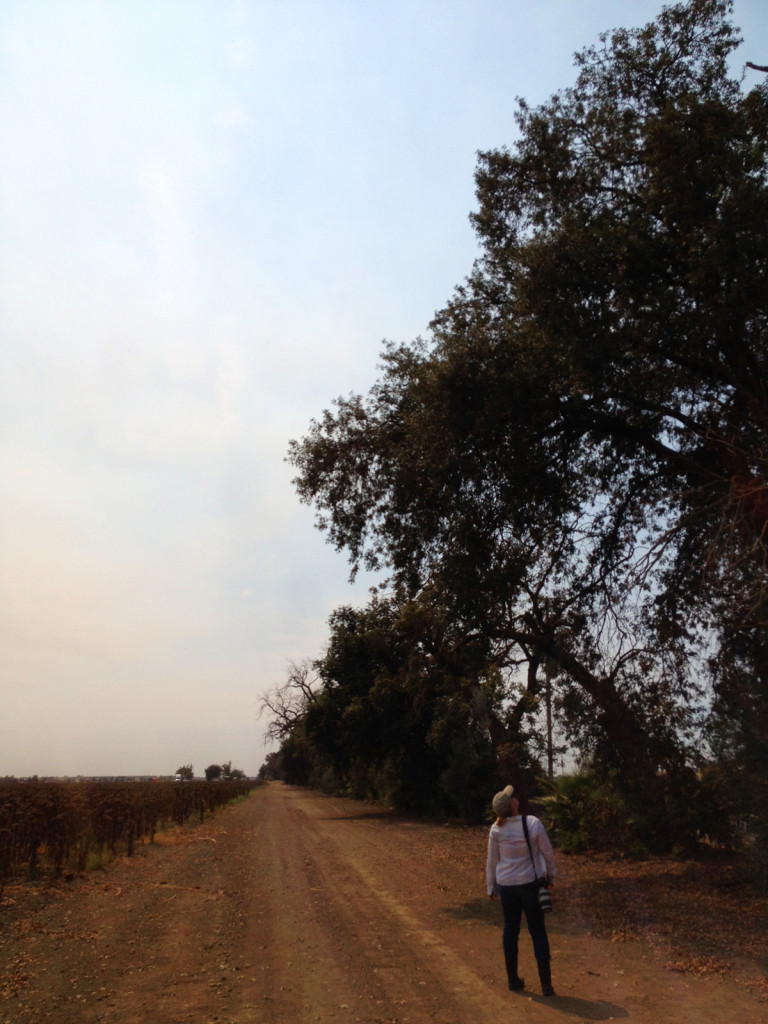
With the midday sun high above us now, Sara and I also decided to seek shade and refuge. An American kestrel hovered daintily in the distance, before swooping down after something in the field.
Sitting down to tacos and tostadas back at the air-conditioned shopping center, I asked Sara why she’s been so curious to investigate the interplay between birds and farms. She said most recent studies have focused on tropical settings like coffee and cacao farms. Yet, in agriculturally intensive regions like New Zealand and California, there’s has been relatively little research conducted.
“It’s where most of our food comes from, and California is exciting because there’s a lot of biodiversity here,” said Sara. “We have lots of bird species here, and we still don’t know much about what they’re doing.”
More romantically, the study of birds and farms is apparently a bit of a lost art.
Sara recounted a scene from an international conference on conservation biology she attended in August, in France. Speakers at one session were debating the fundamental reasons of why society should value wildlife conservation.
“They had this economist from Britain, and he asked the audience who had ever heard of ‘economic ornithology’.” Sara said she raised her hand, but sitting up above in the auditorium mezzanine, her hand wasn’t seen. “And he was like ‘See, nobody!’ And so I shouted ‘Me! All the way back here!’ And he was like, ‘Okay, so one person in this crowd of a thousand people has heard of economic ornithology.”
A U.S. Department of Agriculture report published in 1899 eloquently defined economic ornithology as “the study of birds from the standpoint of dollars and cents,” and that it “deals with birds in their relation to agriculture, horticulture, trade, and sport; it treats of species important to the farmer, the fruit grower, the game dealer, the milliner, and the sportsman; in short, it is the practical application of the knowledge of birds to the affairs of everyday life.”
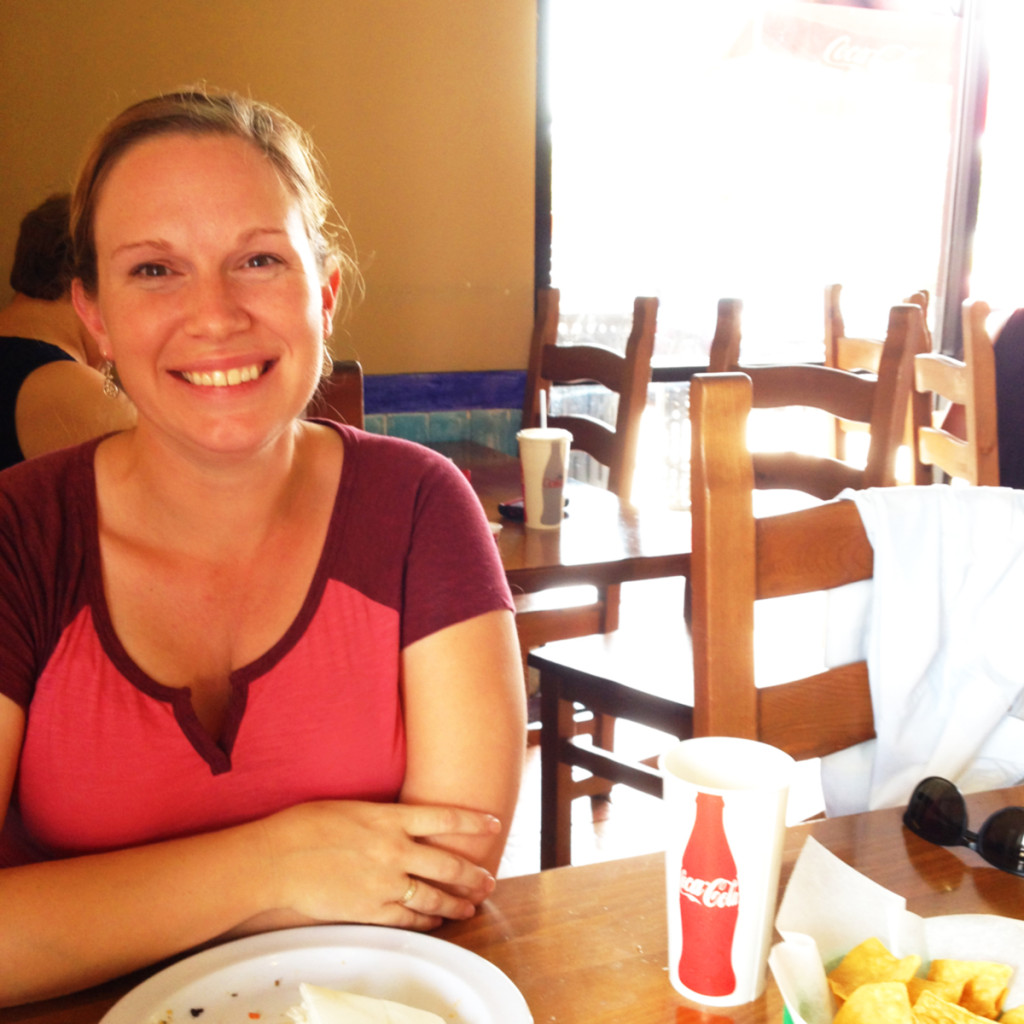
In fact, there once existed a Section of Economic Ornithology under the USDA, established by Congress in 1885 (the office since has been transferred around various bureaus and departments, and its current incarnation is the USDA Animal and Plant Health Inspection Service). The research field predated the era of industrial pesticides, to a time when farmers and governments relied on natural historians to study and learn from the patterns and behaviors of birds and insects. Textbooks with titles like Farm Friends and Farm Foes were available.
“When you think about it, it’s actually a lot older than most modern conservation biology,” said Sara. “From the early 1900’s and late 1800’s is when the field started, blossomed, and then faded away quite quickly, once pesticides became widespread.”
But this field of study is coming back. “We just call it something different now,” Sara winked. “We call it ‘ecosystem services’,” she said, referring to the rather corporate-sounding term in fashion within scientific and government circles these days, which argues that natural resources like wetlands or forests provide economic value to society through their everyday biological functions, as if they were machines produced specifically for human benefit.
I got up to refill our drink cups, and we took a break from talking science to catch up on our personal lives. Being an ecologist isn’t all fun and games outdoors — Sara mentioned the imminent need to seek out her next grant or employment, as her current research funding nears its end. The life of a young academic is basically that of a serial entrepreneur, forming one startup after another, each time with its own gambles and risks.
It’s not the most comforting of circumstances, but for Sara, it’s exactly what she loves about being a career scientist.
“I think I love that I feel like I’m always finding my way?” Sara said to me as we finished eating. “Sometimes it’s a little frustrating and terrifying, because I don’t always know what way that will be. But I’m able to just sort of chase up things that I’m curious about and interested in, and I see a need to understand it more. So it’s a ton of opportunity and there’s an excitement in that.”
For now, that curiosity is in birds and farms, whether it’s falcons in vineyards, songbirds in sunflower fields, or barn owls in vineyards — another topic she’s working on. For Sara, a job is where she can ask and answer interesting questions, and where she’s doing work that helps move the world of ecology and conservation biology along.
“If it’s benefiting one person, or benefiting something bigger, or getting word out there about that something — all of those excite me. Which is why it’s very hard for me to predict what I’ll be doing in a year and a half’s time, because I’m quite open to lots of different options.”
It’s definitely a credit to her personality; I don’t think I’ve ever seen Sara with a frown on her face. Even when she was talking about her disappointing summer experiment, it was with a chipper shrug and with eyes forward, learning the lessons and looking for the next question to ask, finding solutions through uncertainty.
As we gathered our things to leave, Sara laughed again. “Whatever. I just usually let the wind blow me and see where I land, to be honest. That’s why I’ve been bouncing around the world for the last few years.”
“But yeah, I can’t complain. It’s a pretty awesome life, actually. It’s pretty good.”
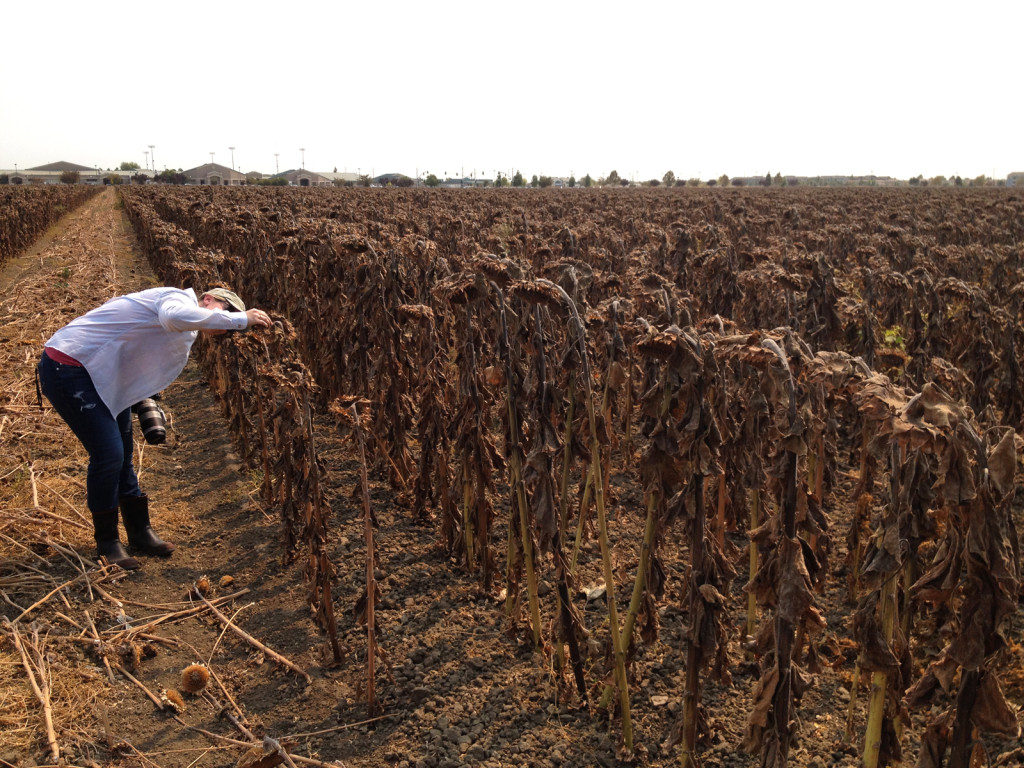
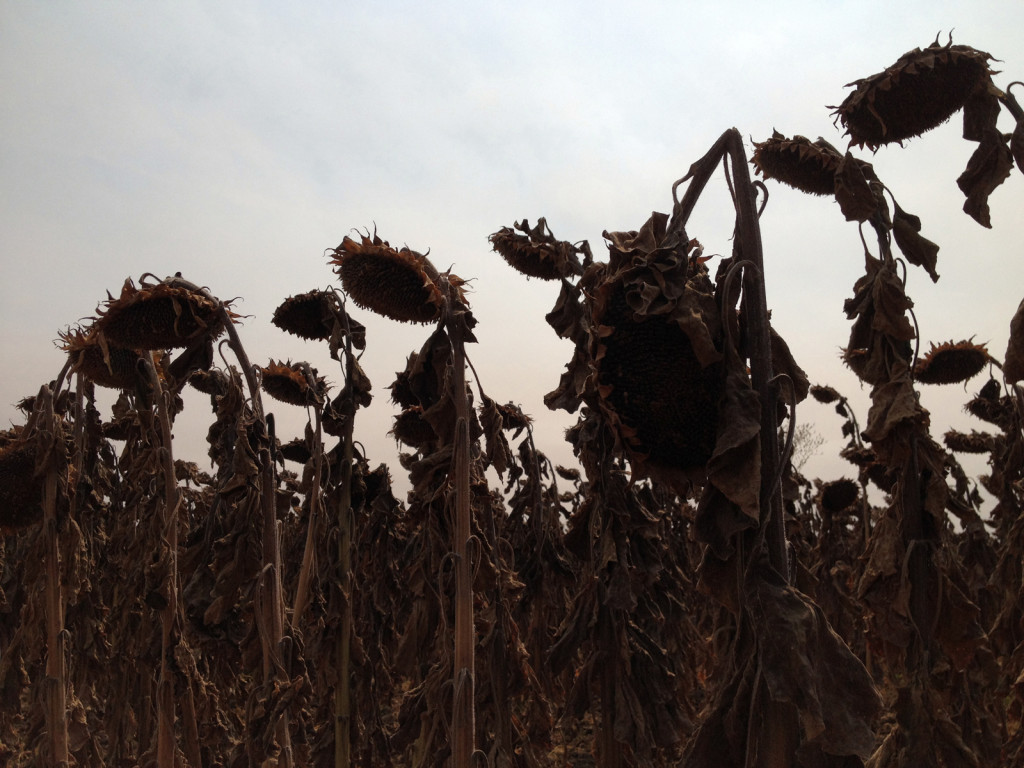
CREDITS
Story: Ben Young Landis
Photography: Ben Young Landis
